Poll: Stirring the pot
Most Minnesotans believe that biased reporting contributes to our polarized political culture.
A whopping two-thirds of Minnesotans say local reporters contribute to the toxicity of their state’s political discourse, according to the spring edition of the quarterly Thinking Minnesota Poll, sponsored by Center of the American Experiment. A majority (52 percent) of respondents even believe reporters in Minnesota misrepresent the facts to fit their own narrative.
The poll was conducted by Meeting Street Insights, a nationally recognized survey research operation based in Charleston, South Carolina. Using a mix of cell phones and landline phones, the company interviewed 500 registered voters across Minnesota from November 30 to December 2. The margin of error is +-4.38 percent.
“According to most Minnesotans, liberal media bias is alive and well in the land of 10,000 lakes,” says pollster Rob Autry, president of Meeting Street Insights. “After two years of defund the police, race riots and toxic politics, most say the state’s news media isn’t being Minnesota nice (or fair) to conservative and Republican viewpoints.”
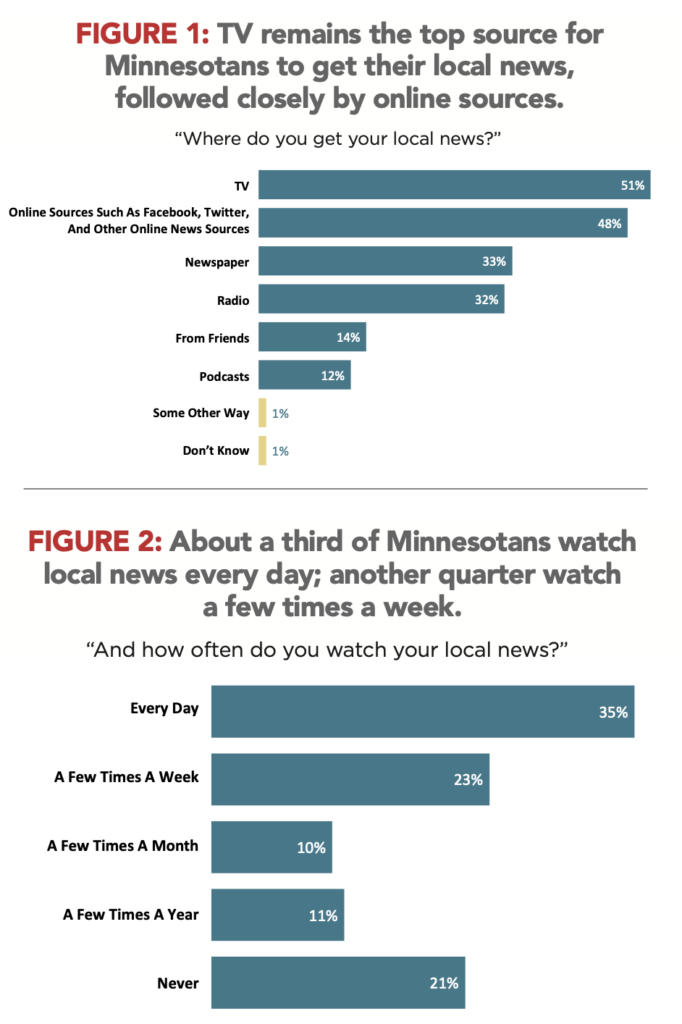
Respondents — regardless of political affiliation, age, or geographic location — believe the media bias cuts dramatically against conservatives. Almost half (49 percent) of the people surveyed believe that bias in the Minnesota media favors liberals and harms conservatives. Just 10 percent believe that Minnesota media favors conservatives and harms liberals. Thirty percent perceive no bias.

Majorities of Republicans (84-4 percent) and Independents (52-16 percent) believe a liberal bias exists. Remarkably, even a plurality of Democrats (18-14 percent) agrees with them. Of no surprise is the fact that a majority of Democrats (55 percent) see no bias.
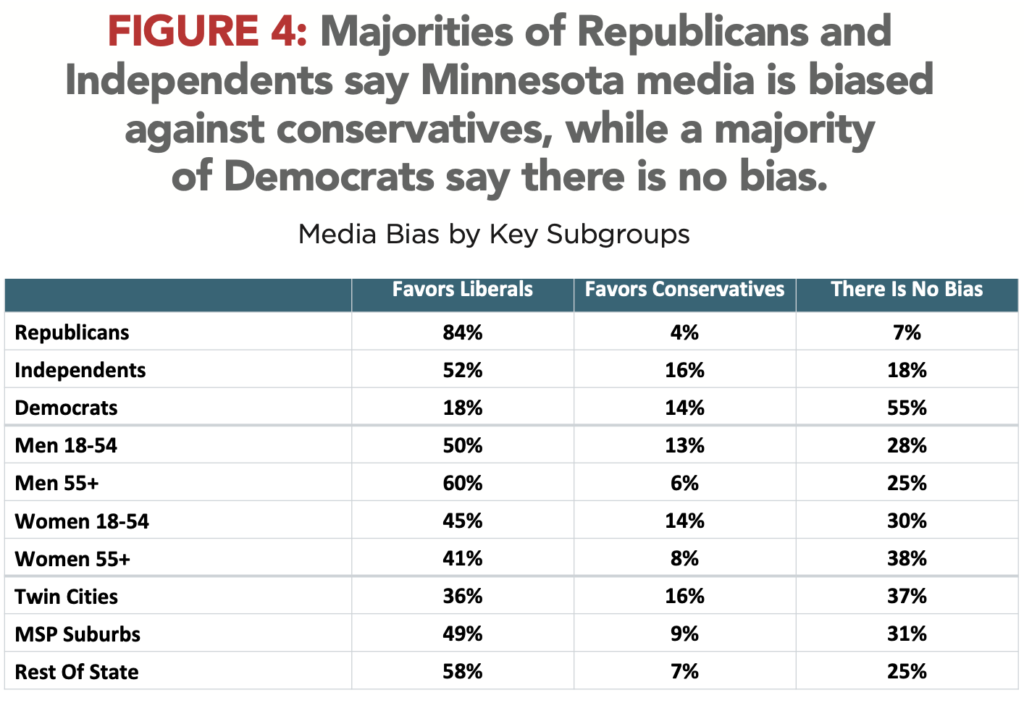
Among individual media outlets, Minnesotans believe the Star Tribune exhibits the strongest bias, 57 percent saying the newspaper is biased and only 24 percent saying it is not biased. WCCO-TV was a close second according to the poll, with 50 percent calling the news outlet biased and 33 percent answering not biased. The Pioneer Press, KARE 11 and FOX 9 scored much better on the bias scale with our respondents.

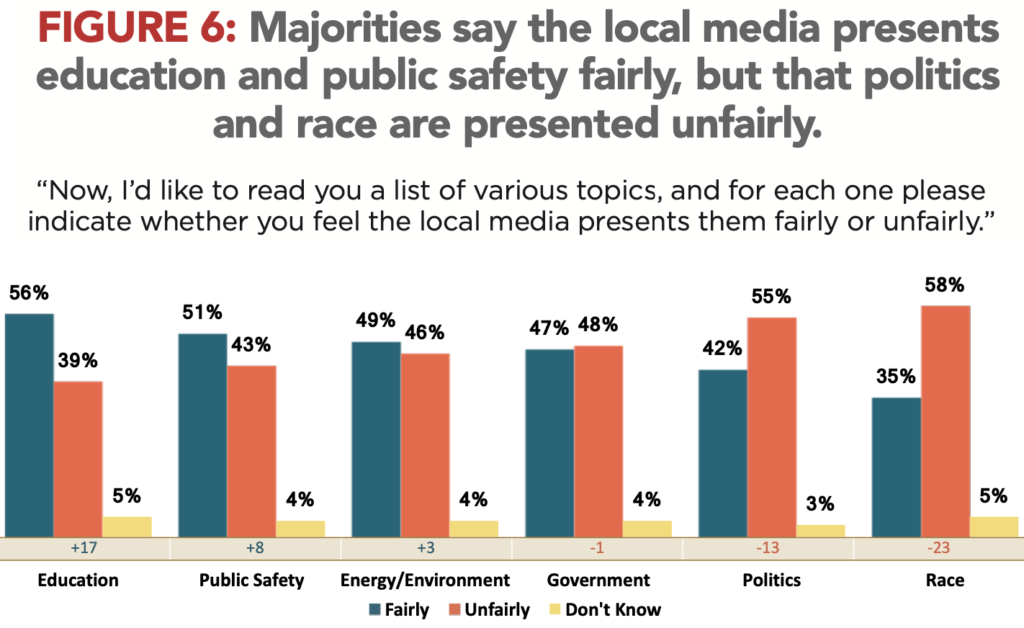
Most Minnesotans get their news via television or online resources, according to the poll. The top choice was television at 51 percent followed closely by online sources at 48 percent. Thirty-three percent chose newspaper and 32 percent chose radio (respondents were allowed to choose more than one source).
The fact that local television news is holding their audience aligns with recent national research from the Pew Research Center. Pew Research found that local TV average audience (defined as the average number of TVs tuned to a program throughout a time period) for the late night and evening news time slots both increased by 4 percent in 2020.
TV news directors might be encouraged to learn from our respondents that 35 percent of them watch a newscast every day and 23 percent watch a few times a week. But a disturbing trend for television news emerges when you break down the data by age. The audience for local television news is dying, perhaps literally.
Of the 51 percent who said they turn to local TV news for information, 72 percent were old enough for the senior citizen discount at Perkins. People in every other age bracket are much more likely to get their news from online sources than from television news. For example, only 29 percent of respondents in the 18-34 age range selected local news as a source of information while 69 percent get their news from online sources such as Facebook. These results match what we know about consumers taking more control of what they watch through the rise of streaming services in order to avoid paid advertisements.
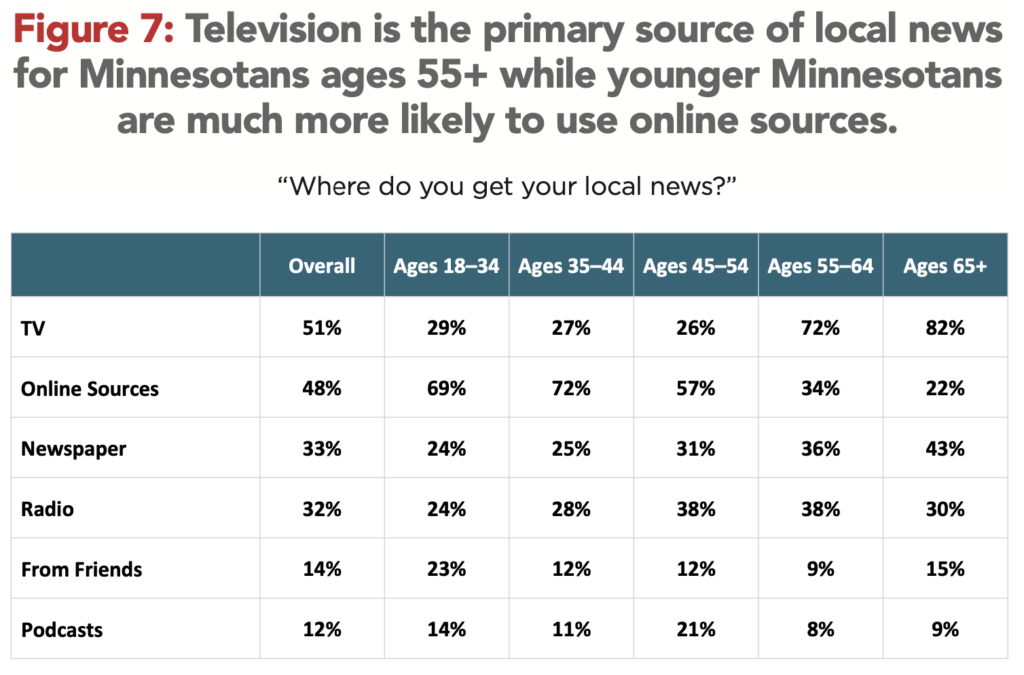
When it comes to issues, poll respondents generally trust what they’re hearing from the media about education and public safety, with 56 percent saying they feel the local media presents education fairly and 51 percent saying they present public safety fairly. Minnesotans are more divided over the coverage of other issues such as politics and race.
Fifty-eight percent of respondents believe the Minnesota media does not present the issue of race fairly. And 55 percent of Minnesotans believe the media does not present the issue of politics fairly.
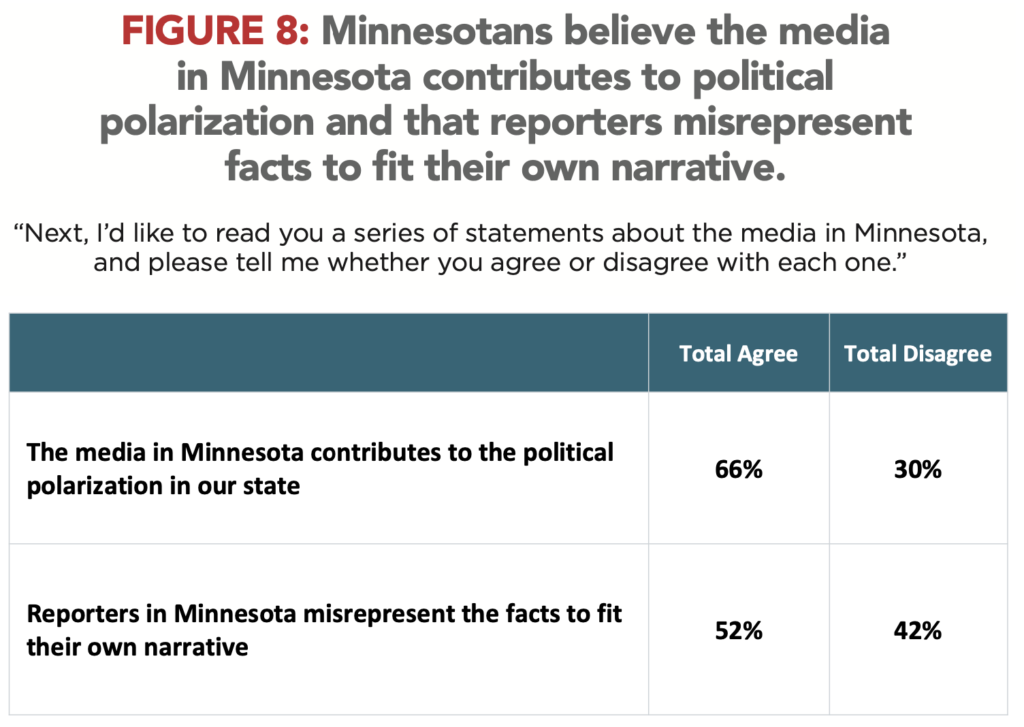
The poll discovered a fairly wide disconnect between Democrats and Republicans on these issues. Democrats were the driving force behind satisfaction with the coverage of race and politics. On race, 53 percent of Democrats felt the media coverage was fair. For politics, it was even stronger with 68 percent of Democrats claiming the coverage was fair. This was in stark contrast to Republicans who are much more skeptical of how race and politics are covered in the Minnesota media. Only 16 percent of Republicans believe coverage of politics is fair and 18 percent believe coverage of race is fair.
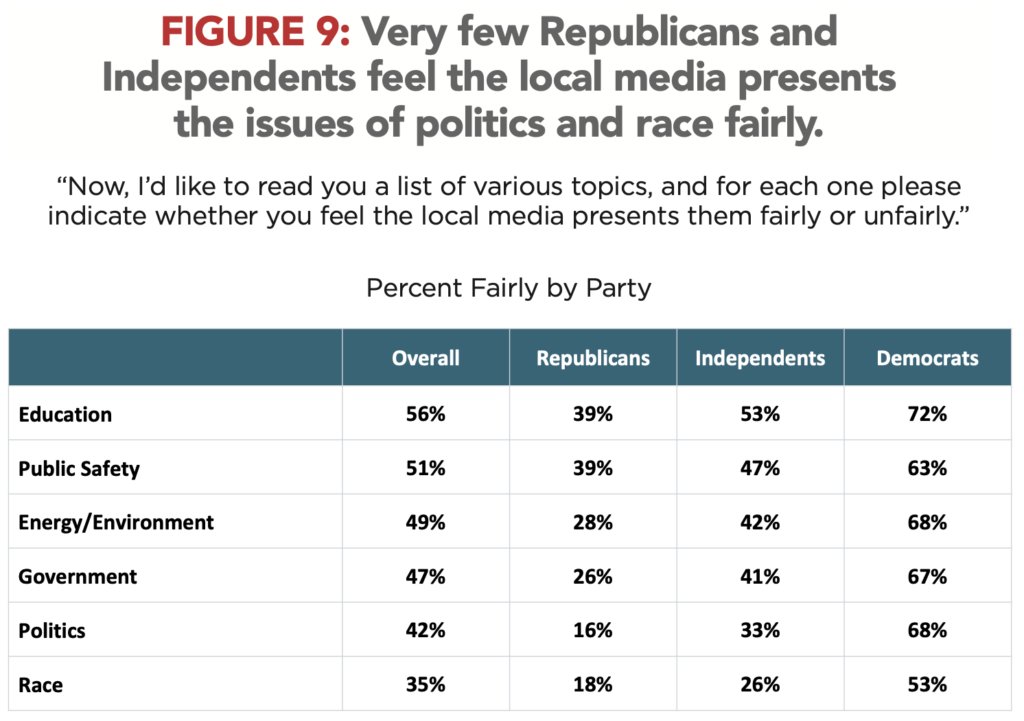
Autry explains the results, “Voters want to trust the state’s news media coverage around issues of importance, and on some issues they do. But when it comes to race and politics, it’s clear that trust is severely broken.”
Differences on coverage of race and politics between the political parties align with the data on overall bias discovered elsewhere in the poll. Those feelings are likely exacerbated by the endless coverage of crime after the George Floyd riots and the recent push to include Critical Race Theory in Minnesota schools. These poll results indicate Minnesotans are more divided on race and politics and local media coverage is making things worse, not better.